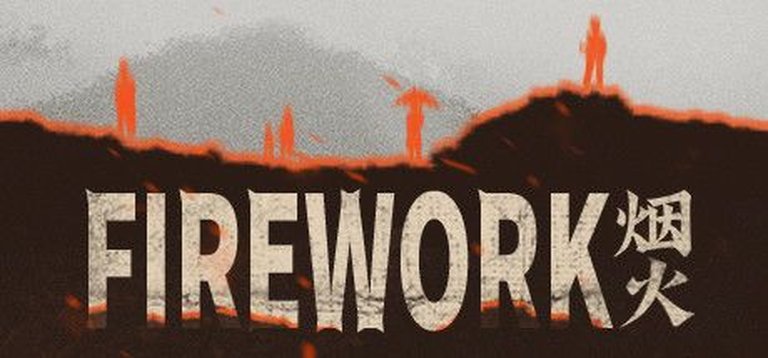- Release Year: 2021
- Platforms: Windows Apps, Windows
- Publisher: Gamera Games
- Developer: Shiying Studio
- Genre: Adventure
- Perspective: 1st-person
- Game Mode: Single-player
- Gameplay: Puzzle elements
- Setting: Asia, Horror

Description
Firework is a 2021 horror-adventure game developed by Shiying Studio and published by Gamera Games. Set in Asia, the game features a 1st-person perspective with 2D scrolling and puzzle elements. Players navigate through a side-view environment, solving puzzles while uncovering a narrative that starts with a creepy premise but becomes confusing due to poor localization.
Where to Buy Firework
Patches & Updates
Guides & Walkthroughs
Firework: A Flickering Flame in the Night
Introduction
Firework (2021) is a game that burns bright with ambition but flickers under the weight of its own narrative inconsistencies. Developed by Shiying Studio and published by Gamera Games, this 1st-person horror-adventure game promised a haunting exploration of Asian folklore and psychological terror. Yet, despite its atmospheric beginnings, Firework stumbles into obscurity, leaving players with more questions than answers. This review will dissect its development, narrative, gameplay, and legacy to determine whether it was a fleeting spark or a firework that never quite ignited.
Development History & Context
Firework emerged in an era where indie horror games were flourishing, with titles like Amnesia: The Dark Descent and Layers of Fear setting high standards for psychological horror. Developed using RPG Maker, a tool often associated with 2D JRPGs, Firework stood out by attempting a 1st-person perspective—a bold technical challenge for the engine. Shiying Studio, a relatively unknown developer, aimed to blend traditional Asian horror with puzzle-solving mechanics, a niche that had seen limited exploration in Western indie games.
The game’s release on February 4, 2021, coincided with a surge in demand for horror experiences, particularly those rooted in cultural folklore. However, Firework faced an uphill battle against more polished competitors. Its development was likely constrained by RPG Maker’s limitations, resulting in a game that felt both visually and mechanically dated compared to its peers.
Narrative & Thematic Deep Dive
Firework‘s story is its most divisive element. Set in an unspecified Asian locale, the game follows an unnamed protagonist trapped in a surreal, nightmarish world filled with cryptic puzzles and eerie encounters. The narrative is fragmented, relying heavily on environmental storytelling and cryptic dialogue. While this approach can be effective in horror, Firework struggles to maintain coherence, particularly due to poor localization. The translation feels rushed, with awkward phrasing and unclear motivations that obscure the intended themes of guilt, memory, and redemption.
The game’s horror elements draw from classic Asian folklore, incorporating elements like vengeful spirits and cursed objects. However, these themes are underdeveloped, leaving players to piece together a narrative that feels more confusing than compelling. The lack of clear character arcs or emotional investment further weakens the experience.
Gameplay Mechanics & Systems
Firework combines exploration, puzzle-solving, and light horror mechanics. Players navigate a side-scrolling 1st-person environment, interacting with objects to progress. The puzzles are the game’s strongest suit, often requiring players to manipulate the environment in creative ways. However, the controls feel clunky, and the UI is unintuitive, detracting from the immersion.
Combat is minimal, with players occasionally fending off enemies using rudimentary actions. The progression system is nonexistent, as there are no upgrades or unlockables to incentivize replayability. The game’s reliance on trial-and-error puzzle-solving can be frustrating, especially when clues are sparse or poorly communicated.
World-Building, Art & Sound
Visually, Firework leans into a dark, monochromatic aesthetic, evoking a dreamlike nightmare. The 2D scrolling backgrounds are atmospheric but lack detail, making the world feel hollow. The sound design is equally hit-or-miss, with effective ambient noises that build tension but a soundtrack that fails to elevate the mood.
The game’s setting is its most intriguing aspect, blending traditional Asian architecture with surreal, otherworldly elements. However, the world feels underutilized, with many areas serving as little more than puzzle backdrops. The art style, while fitting for the horror genre, lacks the polish seen in other indie horror titles.
Reception & Legacy
Firework received a lukewarm reception upon release, with critics citing its confusing narrative and technical shortcomings. The sole critic review on MobyGames, from Jump Dash Roll, awarded it a 50%, praising its puzzles but criticizing its poor localization and lack of narrative cohesion. The game failed to make a significant commercial impact, with only 8 players listed as collectors on MobyGames as of 2025.
Despite its flaws, Firework holds a niche appeal among horror enthusiasts who appreciate its atmospheric moments and puzzle design. However, its legacy is overshadowed by more successful indie horror titles that better balanced storytelling and gameplay. The game’s use of RPG Maker for a 1st-person experience remains a curiosity, but it ultimately serves as a cautionary tale about the limitations of the engine for certain genres.
Conclusion
Firework is a game of missed potential. Its atmospheric horror and puzzle mechanics show glimpses of creativity, but these are overshadowed by a confusing narrative, technical limitations, and poor localization. While it may find an audience among niche horror fans, it fails to leave a lasting mark on the genre. In the grand tapestry of video game history, Firework is a fleeting spark—a game that burned too briefly to be remembered.